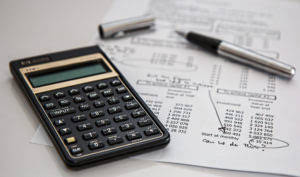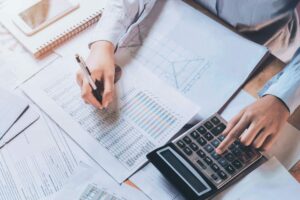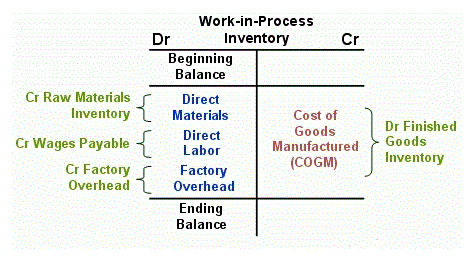
Depreciation begins one month after a fixed asset is placed into service and continues until an item is fully depreciated or disposed of either through salvage or sale. Depreciation is deducted from gross profit on the income statement, thereby reducing gross taxable income for the business. For investors, firms with high return on assets (ROA) ratios signify a buy and a trusted source of income as, most of the times, these firms, distribute dividends as well.
How Are Current Assets Different From Fixed (Noncurrent) Assets?
Noncurrent assets also include long-term investments, deferred charges, and intangible assets. A fixed asset has a physical form and is reported on the balance sheet as PP&E. Companies purchase fixed assets to produce goods or services, for office and operating use, or to rent to third parties. Many organizations choose to present capitalized assets in various asset groups. It is common to segregate fixed assets on the balance sheet by asset class, such as buildings or equipment, as separate lines on the balance sheet.

Depreciation methods for fixed assets
- They’re used to generate revenue, whether it’s a piece of equipment that produces goods to sell, office equipment, or a piece of real estate that acts as a business location that provides services to customers.
- Public companies are required to report these numbers annually as part of their 10-K filings, and they are published online.
- Assess where you’re at and identify what would streamline your operations.
- These metrics are relevant for companies making large purchases of property, plant, and equipment (PP&E) to improve their output.
- However, those buildings are not ready to use, but 80% of the flats have been sold out.
The building is a tangible asset and, if the company keeps the building for more than one year, it becomes a fixed asset. After closing the legal agreement with the buyer, company ABC will own the main building where it will run its core operations and a second building, which can be rented and earn the company an extra revenue. However, the value of the building, $15 million, will be reported as a fixed asset on the balance sheet.

Related AccountingTools Courses
Depreciation is when an asset decreases in value, usually because of normal wear and tear. Most fixed assets decrease in value–a van gets old, a computer slows down, a tool wears out. These items may last more than a year, but they are of lower value and are not major investments. For example, a company that purchases a printer for $1,000 with a useful life of 10 years and a $0 residual value would record a depreciation of $100 on its income statement annually. For something to be counted as one of its assets, a company must possess a right to it as of the date of the company’s financial statements.
The depreciation expense is recorded on the income statement and reduces the company’s net income. Fixed assets appear on the balance sheet, where they are classified after current assets, as long-term assets. This line item is paired with the accumulated fixed asset accounting depreciation line item, resulting in a net fixed assets figure. A sample presentation of the assets section of a balance sheet appears in the following exhibit, with the positioning of the fixed assets and accumulated depreciation line items highlighted.
- Tangible assets have a physical presence and can be touched, such as land and building, plant and machinery, vehicles, etc.
- Fixed assets are the things a business owns that help it produce and earn money.
- Companies purchase fixed assets to produce goods or services, for office and operating use, or to rent to third parties.
- Thus, a laptop computer could be considered a fixed asset (as long as its cost exceeds the capitalization limit).

Investors would like to see the money they invested is being used to generate sufficient cash to receive a return on their investment. This ratio could also be helpful internally for budgeting and investment strategy. Depreciation expense is recorded on the income statement to represent the decrease in value of fixed assets for the period. In some cases, a gain or loss may be recognized due to the disposal, transfer or impairment of fixed assets. A company’s financial statement will generally classify its assets into distinct categories, including fixed assets and current assets. The method you choose will depend on the type of asset and how they are used.
- These items also appear in the cash flow statements of the business when they make the initial purchase and when they sell or depreciate the asset.
- Since fixed assets are used for a longer period of time, they are likely to devalue with use.
- My Accounting Course is a world-class educational resource developed by experts to simplify accounting, finance, & investment analysis topics, so students and professionals can learn and propel their careers.
- When a company reports persistently negative net cash flows for the purchase of fixed assets, this could be a strong indicator that the firm is in growth or investment mode.
- HighRadius Autonomous Accounting Application consists of End-to-end Financial Close Automation, AI-powered Anomaly Detection and Account Reconciliation, and Connected Workspaces.
- Initially, it seems to be a game-changer, speeding up production and adding an extra zest to her lemonade.
It helps to use real-world examples and strong processes to discover what’s best for your fixed assets and financial reporting. A higher number of depreciation means that a business hasn’t replaced their fixed assets in a while. An owner could look at this number and decide if they need to replace anything to improve their operations. Use your accounting software to find the balance sheet, one of the major financial statements small businesses use. FreshBooks accounting software simplifies the process of finding and understanding your balance sheet.
Current assets are used to facilitate day-to-day operational expenses and investments. As a result, short-term assets are liquid, meaning they can be readily converted into cash. These assets also have different time frames in which they are held by a company. Companies categorize the assets they own and two of the main asset categories are current assets and fixed assets; both are listed on the balance sheet.


Deixe o seu comentário
You must be logged in to post a comment.